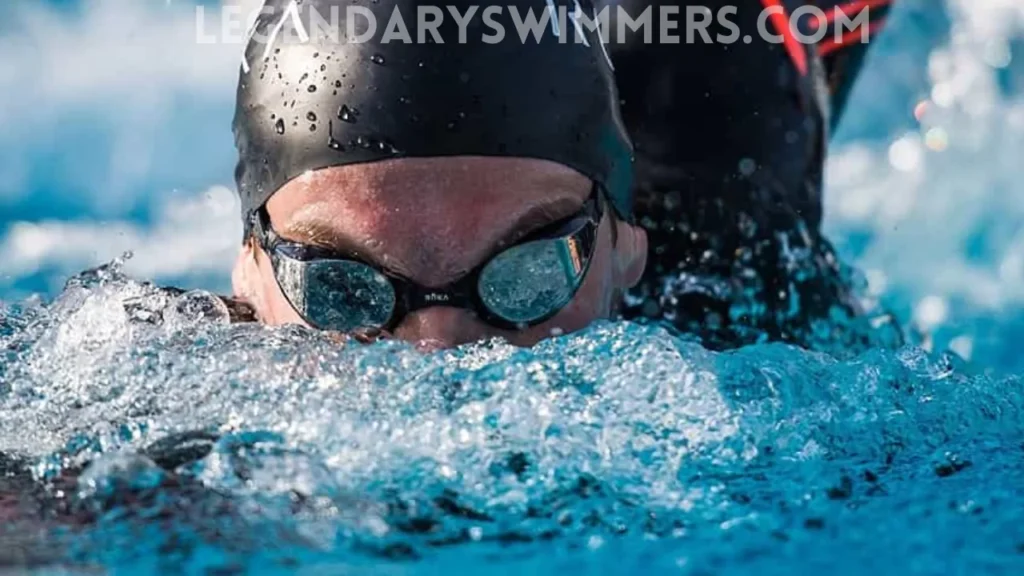
Best Goggles for Open Water Swimming | Expert Guide 2025
- Updated:
Swimming in open water can be an exhilarating experience, but the right goggles are essential for safety, comfort, and performance. Let’s dive into everything you need to know to select the perfect pair.
Challenges of Open Water Swimming
Unlike controlled environments like pools, open-water swimming presents unique challenges that demand specialized equipment. Here are some key factors:
- Visibility: Open water conditions often include murky waters or intense sunlight, making clear lenses or polarized goggles critical.
- Environmental Factors: Waves, currents, and floating debris necessitate goggles with a secure fit and durability.
- Safety: Peripheral vision is crucial for spotting buoys, other swimmers, or obstacles in the water.
- Weather Variability: Rapidly changing weather conditions, including glare from the sun, fog, or rain, can hinder vision. Selecting adaptable goggles ensures a safer swim.
Interesting Fact: According to the World Open Water Swimming Association (WOWSA), most of open water swimmers report visibility as their top challenge.
Key Features to Look for in Open Water Swimming Goggles
1. Lens Type and Tint
- Polarized Lenses: Reduce glare from sunlight reflecting off the water, enhancing clarity.
- Tinted Lenses: Amber or blue tints work well in various lighting conditions, balancing brightness and contrast.
- Clear Lenses: Ideal for low-light swims, such as early mornings or cloudy days. These provide maximum visibility without darkening the view.
Expert Tip: Dr. Alice Kim, an ophthalmologist, advises, “Polarized lenses not only reduce glare but also protect against UV exposure, which can lead to long-term eye damage.”
2. UV Protection
Extended exposure to sunlight can damage your eyes, especially during long swims. Goggles with UV-blocking capabilities are critical for maintaining ocular health.
A study by the American Academy of Ophthalmology highlighted that UV-blocking lenses reduce the risk of cataracts.
3. Anti-Fog Features
- Look for goggles with a reliable anti-fog coating. Many premium goggles now come with pre-applied coatings.
- Using anti-fog sprays before each swim can extend the effectiveness of the goggles.
Maintenance Tip: Avoid touching the inner surface of the lens, as this can strip the anti-fog coating. Rinse the goggles gently after every swim.
4. Fit and Comfort
- Silicone gaskets and adjustable straps ensure a secure fit without causing discomfort.
- For long-distance swims, softer gaskets help minimize pressure on the orbital bone.
- Test goggles by gently pressing them against your eyes without the strap. Proper suction indicates a good seal.
5. Strap Adjustability
A secure, adjustable strap keeps goggles in place during intense swims. Double straps, often found in professional-grade goggles, distribute pressure evenly for a better fit.
Insight: Double-strap systems are particularly helpful in turbulent open water conditions, where consistent tension is essential.
6. Durability
- High-quality materials, such as polycarbonate lenses and silicone seals, ensure longevity.
- Scratch-resistant coatings prevent lens damage, particularly in sandy or rocky environments.
Personalizing Your Goggles
Face Shape and Size
- Swimmers with smaller faces benefit from low-profile designs, which reduce drag.
- Those with wider or higher nose bridges should consider goggles with adjustable nose pieces.
Swimming Frequency and Environment
- Competitive swimmers may need specialized goggles for different environments, such as tinted lenses for ocean swims and clear lenses for indoor use.
- Casual swimmers should prioritize versatile goggles suitable for varying conditions.
Top-Rated Goggles for Open Water Swimming
- Magic 5 Goggles: Known for their custom fit using face-scanning technology. These are ideal for competitive swimmers looking for an unparalleled fit.
- Roka R1 Goggles: Feature advanced anti-fog and UV-blocking technology, suitable for long-distance ocean swims.
- Speedo Fastskin Hyper Elite: Trusted by professionals for its sleek design and wide field of vision.
- Arena Cobra Ultra Swipe: Combines anti-fog swipe technology with a durable, low-profile fit.
Caring for Your Goggles
Proper maintenance of your swimming goggles is essential to prolong their lifespan and maintain their performance. Here’s a detailed guide to ensure your goggles stay in top shape:
1. Rinse After Use
After every swim, rinse your goggles thoroughly with fresh, cool water. This step helps to:
- Remove salt, chlorine, and other debris that can corrode or damage the lenses and seals over time.
- Prevent the build-up of minerals, particularly after ocean swims, which can leave residue on the lenses.
Tip: Avoid using hot water as it can damage the anti-fog coating and weaken silicone parts.
2. Store Properly
Proper storage is vital to keep your goggles in good condition. Follow these practices:
- Use a protective case or microfiber pouch to prevent scratches, dust, and exposure to direct sunlight.
- Ensure the goggles are dry before storing them to avoid mould or mildew growth.
- Avoid tossing them loosely into your bag where they might get crushed or damaged by other items.
Tip: Some high-end goggles come with ventilated cases designed to promote airflow, reducing moisture retention.
3. Avoid Chemicals
Chemicals such as sunscreen, cleaning agents, and body lotions can degrade the anti-fog coating and damage silicone components. Take precautions by:
- Apply sunscreen or lotions well before wearing your goggles.
- Wash your hands thoroughly before touching the goggles, especially the lenses.
4. Handle Lenses with Care
The inner lens surface, where the anti-fog coating is applied, is particularly delicate. To preserve its effectiveness:
- Do not rub or touch the inner lenses, as even fingerprints can strip the coating.
- If cleaning is necessary, use a soft microfiber cloth or rinse with fresh water—never abrasive materials or tissues.
5. Periodic Deep Cleaning
Over time, grime and oils may build up on your goggles. Perform a deep clean occasionally by:
- Soaking the goggles in a mild soap solution for a few minutes (use a gentle soap free from harsh chemicals).
- Gently scrubbing the straps and gaskets with your fingers or a soft brush.
- Thoroughly rinsing to remove all soap residue and leaving them to air dry.
Tip: Avoid submerging goggles with electronic or detachable components in water; follow the manufacturer’s cleaning instructions for such models.
6. Check for Wear and Tear
Inspect your goggles regularly for signs of damage:
- Look for cracks or wear in the silicone seals, which can compromise the fit and lead to leaks.
- Check for scratches on the lenses that may impair visibility. If they become too scratched, consider replacing the lenses or goggles altogether.
7. Replace Anti-Fog Coatings
If your goggles start to fog frequently despite proper care, the anti-fog coating may have worn off. You can:
- Reapply anti-fog sprays or solutions specifically designed for swimming goggles.
- Follow the instructions carefully to ensure proper application.
Tip: Some swimmers use a homemade solution of diluted baby shampoo or saliva as an anti-fog remedy, but commercial products are generally more reliable.
FAQs
What type of lenses are best for open water swimming?
Polarized lenses are ideal for reducing glare and improving visibility.
How can I keep my goggles from fogging up?
Use goggles with an anti-fog coating and avoid touching the lens. Anti-fog sprays can help extend the coating’s life.
Do different face shapes require specific goggles?
Yes, choosing goggles with adjustable nose bridges and straps ensures a better fit for various face shapes.
How long do swim goggles typically last?
With proper care, high-quality goggles can last 6-12 months.
Are tinted lenses suitable for all conditions?
Amber or blue tints work well in most lighting conditions, but clear lenses are better for low-light swims.
Conclusion
Don’t let poor visibility or discomfort ruin your next swim. Equip yourself with goggles tailored for open water conditions. Start exploring premium options today and elevate your swimming experience to new heights!
References

Natasha Nicole Leyva
Hi, I’m Natasha—swimmer, coach, and aquatic fitness enthusiast. My journey began in New Zealand after a professor recommended swimming to help with a knee injury. The low-impact nature of swimming worked wonders, and it quickly became my favorite form of exercise. This passion grew into a thriving swim academy, and soon, requests for aquatic fitness classes started pouring in. After becoming certified, I realized how powerful water workouts could be for recovery and fitness. Now, I share my expertise here to help others experience the benefits of aquatic movement—whether for recovery, fitness, or fun!






